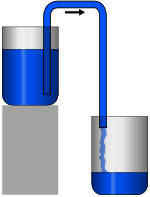developments
I've had a time to complete a bit more of my ideas and have a few findings in my Solar Floor heating project which I thought I'd take the time to document and pass on (to anyone who finds this and attempts to replicate my work for their own benefits).
I've completed my next phase of prototype for heat collector. Essentially this is a length of poly pipe wound around onto a wire mesh backing with a sheet of PET plastic to cover it. The first one was just one length of poly pipe (Bunnings sells them in 20 meter lengths) wound around a wire mesh to hold it in a coil and face the sun ...
The version I wanted to complete next takes this concept further by putting more pipe per square meter and adding a covering of clear wind proof insulation material to act as a "glass house" to reduce (eliminate?) losses of gathered heat due to wind convection cooling the pipes (while the sun is heating them).

The collector is about 1 meter by 1 meter and the pipe is wound tightly around with care taken to not kink or fold the pipe which would restrict the water flow.

This collector now contains 60 meters (or $12 worth) of poly pipe and with the PET sheet ($15) is now far more effective at gathering water than my older one (which only had 40 meters of pipe too).
problems (and solutions?)
It seems that this experiment is not without problems which need consideration to find solutions. The first is:
Bubbles
 The system works on the principle of least energy required, so moving the water around the system requires that the principles of a siphon are used.
The system works on the principle of least energy required, so moving the water around the system requires that the principles of a siphon are used.But as my inlet bucket and outlet bucket are the same point (as you can see in the above video) the water will simply remain in the pipe.
That would seem pointless if it wasn't for the fact that 1) my pipe is what is gathering the heat and 2) I have the pump to move it around.
I was finding however that after a week or so the flow would be markedly reduced. Flushing the system (with a more powerful pump called the garden hose) revealed that bubbles were coming out and it was this air in the system which was causing my system to fail.
I am still not entirely certain what the problem is, but I suspect that it is gasses such as chlorine (used in the reticulated water system) coming out of solution in water (as say the temperature changes) and then gathering in a location ...
I am not sure where the bubbles are forming, in my floor circuit or in my heating circuit. As I have also been wondering how to provide alternative heating systems to this (like to heat it at night too) I thought that an elegant solution was to employ a "bus" solution or "common pool" which would mean that:
1) heating siphon was separate from floor
2) heat could be added by a third (separate) circuit which simply heated the water in the common pool.
Just roughly this looks like the figure below where I have my old single circuit on the left and my new multiple circuit system on the right.

This allows me to
- work out if bubbles are in one side or the other
- add a night time heating of the water (say by gas or off peak electricity)
- not waste my heated water by putting it through the solar heating panel (which would just act as heat loss out into the night air and give me no return)
I'll keep you posted on this as I only completed this section yesterday.
Lastly
I thought I'd provide a little more details about the pump. As I mentioned I bought if from Jaycar and it cost $49.95 Its the 7v model which moves about 140L / hour of water (in full sunlight).

I thought that this was a 'good number' (upon experimentation) to start with and the more expensive 12V model (twice the price) moved 200L / hour which I thought may be too fast for heat gathering.
As it turns out I think that the 140 would be too fast, but as it also turns out there is enough resistance pumping the water around that it works out to be about half that in practice.
For reference:
- Part 1 and
- Part 2 with some extra details at
- some measurement here and
- here about the gas heating of the water in the junction tank and
- here about windy rainy days observations










No comments:
Post a Comment